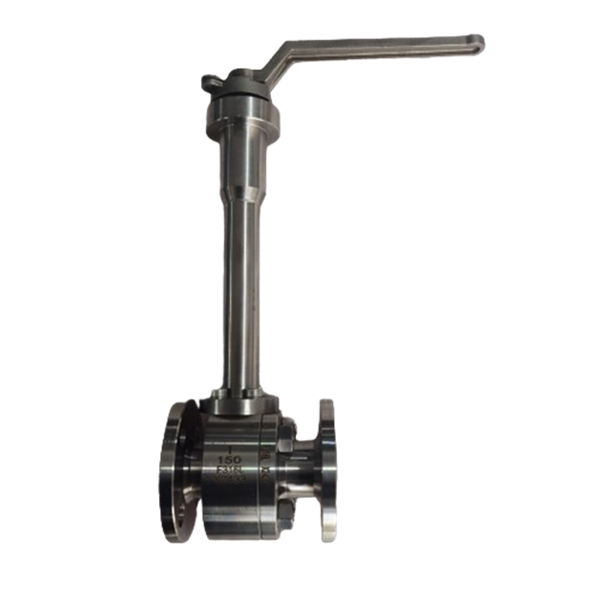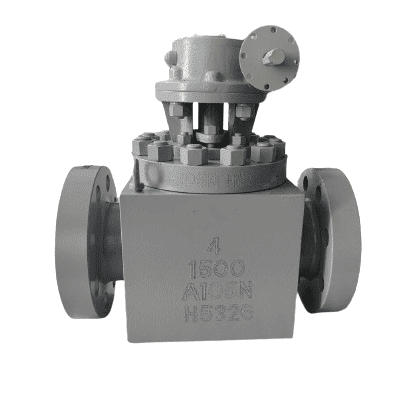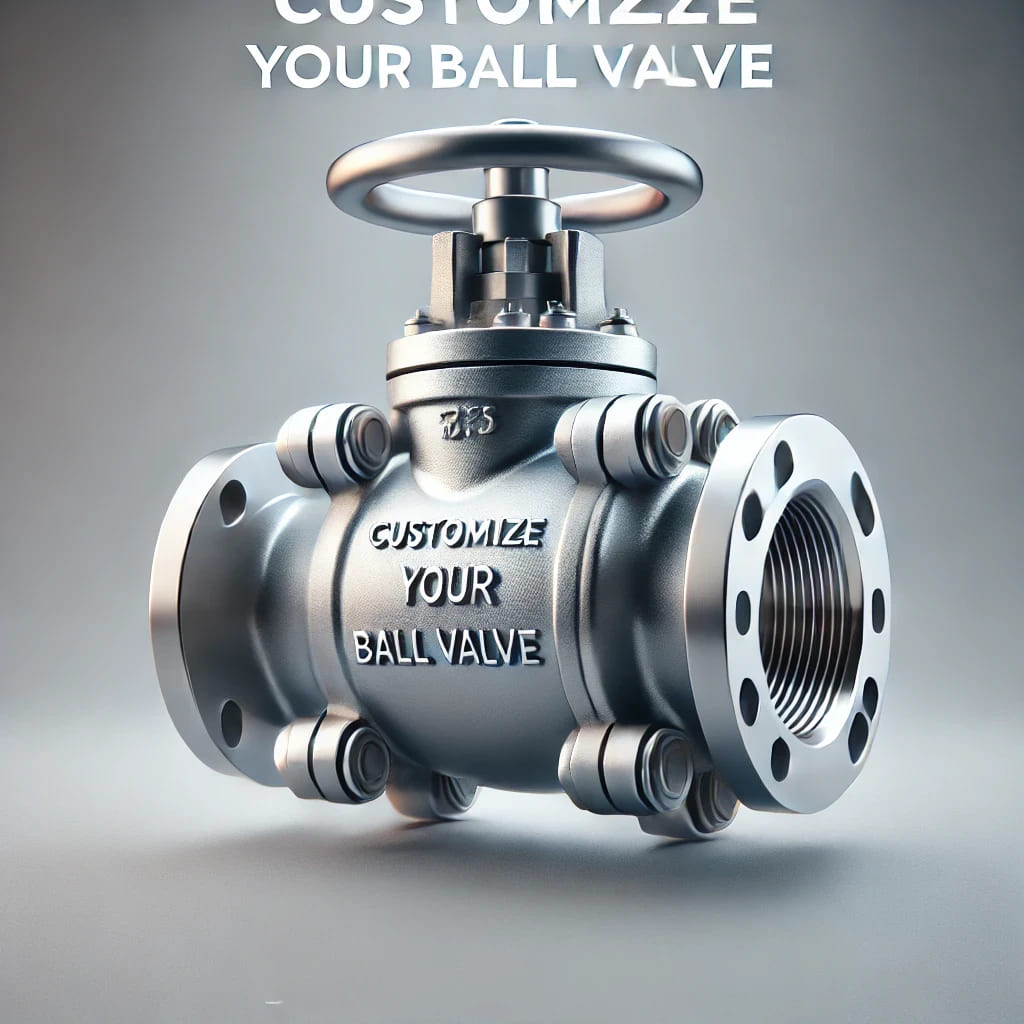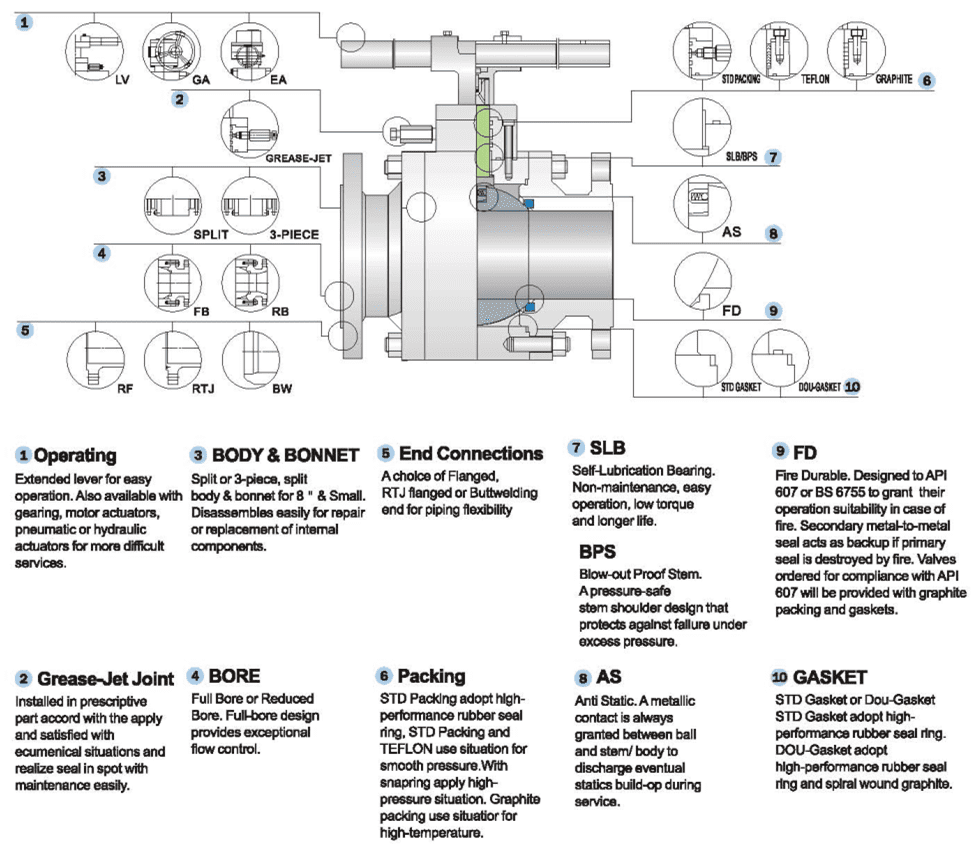Ball Valve Manufacturer
Only unexpected, nothing impossible
WHO IS BALL VALVE ?
A ball valve is a type of flow control device that uses a spherical disc (ball) to control the flow of liquid or gas through it. When the ball’s hole is aligned with the flow, the valve is open; when turned 90 degrees by the valve handle, the flow is blocked. Ball valves are known for their durability, tight sealing, and ease of operation, making them suitable for a wide range of applications in industries such as oil and gas, water treatment, and chemical processing. They can handle high pressure and temperature conditions and provide reliable, leak-proof performance.
BALL VALVE Series

Floating Ball Valve

Trunnion Mounted Gate Valve

Forged Steel Ball Valve

Metal to Metal Ball Valve

Top Entry Ball Valve

Customize your Ball Valve
How Does Ball Valve Work ?
The process of using a gate valve is as follows:
The basic structure of a gate valve includes the valve body, gate, stem, and handwheel or actuator. The valve body, typically made of metal, contains the internal parts and provides connection points to the pipeline. The gate, a flat or wedge-shaped component, moves up and down to open or close the flow path. The stem connects the gate to the handwheel or actuator, transmitting motion. The handwheel or actuator is used to manually or automatically operate the valve.
During use, the valve is opened by turning the handwheel or operating the actuator. When the handwheel is turned clockwise, the stem raises the gate, gradually lifting it out of the flow path. As the gate rises, the flow path opens, allowing fluid to pass through the valve. When fully open, the gate is completely out of the flow path, minimizing flow resistance and pressure drop.
Ball Valve Main Components:
- Body: The main housing of the valve, which contains all the internal components.
- Ball: A spherical disc with a hole (bore) through the center.
- Seat: Rings that surround the ball and form a seal between the ball and the body. They are often made from materials like Teflon (PTFE) or other resilient materials.
- Stem: The shaft that connects the ball to the external handle or actuator.
- Bonnet: The cover for the opening in the valve body through which the stem passes. It is usually bolted or welded to the body.
- Packing: A material (often PTFE or graphite) that is compressed around the stem to provide a seal and prevent fluid leakage along the stem.
- Handwheel/Actuator: The external part used to operate the valve. Handles are manually operated, while actuators can be electric, pneumatic, or hydraulic.

Why Choose Ball Valve?
Ball valves are suitable for a wide range of applications, including water, oil, gas, and chemical services, due to their adaptable design and variety of configurations.
Ball valves provide a tight, leak-proof seal, which is essential for preventing fluid leaks and ensuring system integrity in critical applications.
Operated by a simple 90-degree turn of the handle, ball valves are user-friendly and allow for quick and easy flow control.
The design of ball valves minimizes friction and wear, resulting in reduced maintenance requirements and long-term reliability.
When fully open, ball valves provide a full, unobstructed flow path, leading to minimal pressure drop and efficient fluid transfer.
Ball valves can withstand high-pressure conditions, making them suitable for demanding industrial applications requiring robust performance.
Depending on the material of construction, ball valves can handle a wide range of temperatures, making them versatile for various thermal applications.
Ball valves can be customized to meet specific application needs, including different handle colors, end connections, and material choices, ensuring a perfect fit for any system.
Categorization of BALL VALVE
By Body Style:
- One-Piece Ball Valve
- Description: The valve body is made from a single piece of material.
- Applications: Provides a compact and economical solution, typically used in smaller, lower-pressure systems. It has limited maintenance capabilities due to its single-piece construction.
- Two-Piece Ball Valve
- Description: The valve body consists of two separate pieces that are bolted or screwed together.
- Applications: Offers ease of maintenance and repair, suitable for medium to high-pressure systems. It provides better serviceability compared to one-piece valves.
- Three-Piece Ball Valve
- Description: The valve body is made of three separate pieces, allowing for easy disassembly.
- Applications: Ideal for applications requiring frequent maintenance and cleaning, commonly used in industrial processes. It allows for easy access to internal components without removing the valve from the pipeline.
- One-Piece Ball Valve
By Bore Type:
- Full Bore (Full Port) Ball Valve
- Description: The bore of the valve is the same diameter as the pipeline.
- Applications: Provides minimal pressure drop and allows for maximum flow, used in applications where flow efficiency is critical.
- Reduced Bore (Reduced Port) Ball Valve
- Description: The bore of the valve is smaller than the diameter of the pipeline.
- Applications: More economical, suitable for applications where some flow restriction is acceptable. It is commonly used when pressure drop and flow reduction are not significant concerns.
- V-Port Ball Valve
- Description: The ball has a ‘V’ shaped notch for precise flow control.
- Applications: Used for applications requiring precise flow regulation, such as in control processes. The V-port design allows for better throttling and flow control.
- Full Bore (Full Port) Ball Valve
By Body Style:
- Stainless Steel Ball Valve
- Description: Made from stainless steel, offering high corrosion resistance.
- Applications: Suitable for aggressive and corrosive environments, commonly used in chemical, food, and pharmaceutical industries.
- Brass Ball Valve
- Description: Made from brass, known for its durability and good performance in low to moderate pressure systems.
- Applications: Often used in residential plumbing, water, and gas applications.
- PVC Ball Valve
- Description: Made from Polyvinyl Chloride, a plastic material that is lightweight and resistant to corrosion.
- Applications: Ideal for low-pressure applications involving water and chemical fluids, used in irrigation and pool systems.
- Stainless Steel Ball Valve
By End Connection Type:
- Threaded Ball Valve
- Description: Ends are threaded to screw onto piping.
- Applications: Common in residential and small-scale industrial applications, easy to install and remove.
- Flanged Ball Valve
- Description: Ends have flanges for bolting to pipe flanges.
- Applications: Used in larger-scale industrial applications for secure and leak-proof connections.
- Socket Weld Ball Valve
- Description: Ends are designed to be socket welded to the piping system.
- Applications: Suitable for high-pressure and high-temperature applications, providing a strong and permanent connection.
- Butt Weld Ball Valve
- Description: Ends are designed to be butt welded to the piping system.
- Applications: Ideal for high-pressure, high-temperature, and critical service applications, ensuring a seamless connection.
- Compression Ball Valve
- Description: Equipped with compression fittings for easy connection to piping.
- Applications: Used in plumbing and potable water systems for quick and leak-proof connections.
- Threaded Ball Valve
By Special Features:
- Floating Ball Valve
- Description: The ball is suspended in the fluid and held in place by two seats, allowing some movement.
- Applications: Suitable for low to medium-pressure applications, providing effective sealing.
- Trunnion Mounted Ball Valve
- Description: The ball is anchored by trunnion bearings, preventing movement and reducing operating torque.
- Applications: Used in high-pressure applications, providing reliable performance and easier operation.
- Floating Ball Valve
By Number of Ports:
- Two-Way Ball Valve
- Description: Has two ports (inlet and outlet) and allows fluid to flow in one direction.
- Applications: Commonly used for simple on/off control in piping systems.
- Three-Way Ball Valve
- Description: Has three ports and can be configured for flow diversion, mixing, or shut-off.
- Applications: Used in applications requiring flow direction changes, mixing of fluids, or switching between two sources.
- Four-Way Ball Valve
- Description: Has four ports and allows for more complex flow paths and switching operations.
- Applications: Used in specialized applications requiring multiple flow paths and configurations, such as in certain chemical processes.
- Two-Way Ball Valve
Most Popular Questions for
BALL VALVE
- Cause: Worn out or damaged seals, improper installation, or debris on the sealing surfaces.
- Solution:
- Seal Replacement: Inspect and replace worn or damaged seals.
- Proper Installation: Ensure the valve is installed correctly and tightened appropriately.
- Cleaning: Clean the valve to remove any debris on the sealing surfaces.
- Cause: Corrosion, debris buildup, or improper lubrication.
- Solution:
- Cleaning: Clean the valve to remove any debris.
- Lubrication: Apply appropriate lubrication to the valve components.
- Material Selection: Use corrosion-resistant materials for corrosive environments.
- Cause: Accumulation of debris, corrosion, or improper installation.
- Solution:
- Cleaning: Regularly clean the valve to remove debris.
- Material Selection: Use valves made of corrosion-resistant materials for corrosive environments.
- Proper Installation: Ensure proper alignment and installation to prevent jamming.
- Cause: Rapid closure of the valve, high flow velocity.
- Solution:
- Valve Selection: Use slow-closing valves or those designed to mitigate water hammer.
- Flow Control: Reduce flow velocity by adjusting the system design or using flow restrictors.
- Cause: High flow velocities and low downstream pressure.
- Solution:
- Flow Control: Reduce flow velocity and maintain adequate downstream pressure.
- Valve Design: Use valves designed to minimize cavitation risks.
- Cause: High flow velocities, turbulence, or improper support.
- Solution:
- Support Systems: Install proper supports and dampers to reduce vibration.
- Flow Adjustment: Adjust flow rates to reduce turbulence and vibration.
- Cause: Inadequate material selection for the operating environment.
- Solution:
- Material Selection: Use corrosion-resistant materials like stainless steel or special alloys.
- Protective Coatings: Apply protective coatings to valve components.
- Cause: Chemical attack, temperature extremes, or wear and tear.
- Solution:
- Seal Material: Use seals made from materials compatible with the fluid and temperature conditions.
- Regular Replacement: Implement a schedule for regular inspection and replacement of seals.
- Cause: Lack of consideration for thermal effects during installation.
- Solution:
- Accommodate Thermal Expansion: Allow for thermal expansion and contraction in the system design. Use expansion joints or flexible connectors if necessary.
- Cause: Incorrect valve sizing or debris accumulation.
- Solution:
- Proper Sizing: Ensure the valve is appropriately sized for the application.
- Regular Cleaning: Clean the valve and pipeline to remove any debris causing blockages.
Customized your Valves with EASY!
Tell Us What You Need
Input the valve information you need, such as size, pressure, material and so on.
Directly upload datasheets or drawings.
Get Quote & Solution≤18h
To get a quote in less than 18 hours and have projects executed more easily and procurement streamlined, pls complete this form.
Get Drawing & Datasheet≤24h
For the normal valves, we can provide the drawings or datasheets wihtin 24 hours. For the customzied valves or large project, provide the drawings or datasheet within 48 hours.
Get A Fast Quote
Don’t let delays slow down your operations. Click here to fill out our quick quote form. And we’ll get back to you with a price and delivery time as soon as possible.

